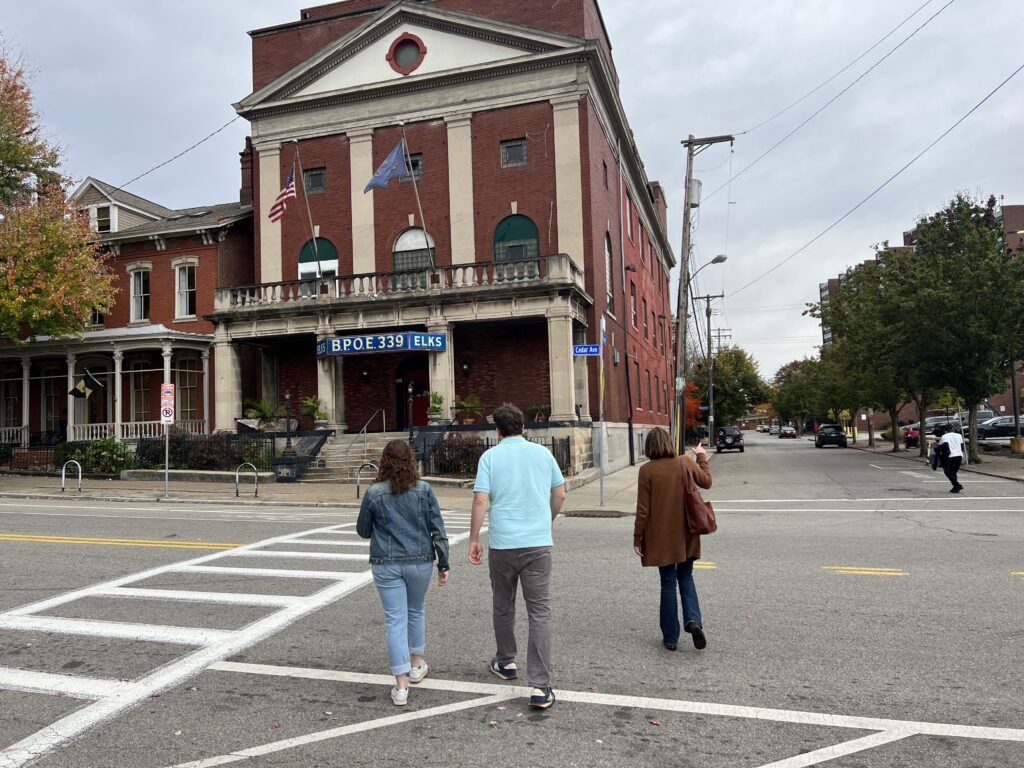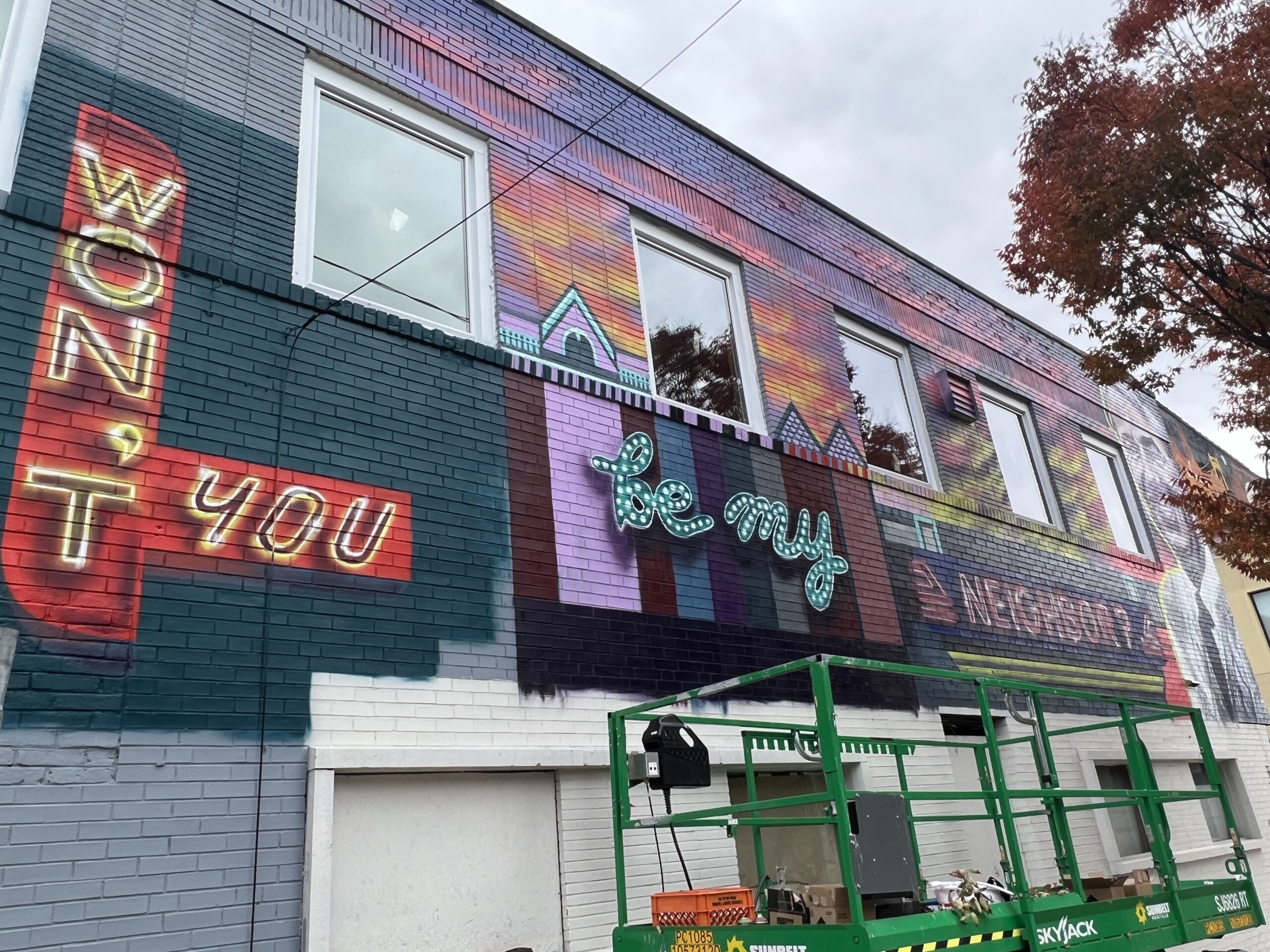The American Press Institute convened its second Inclusion Index cohort in Pittsburgh in late October to begin their in-person training in collaboration with Modifier, powered by Resolve Philly.
The five news organizations present — PublicSource, City Cast Pittsburgh, WESA, WQED and YaJagoff — participated in a full day of training and brainstorming sessions, as well as a walking tour of the Deutschtown neighborhood, a small enclave located on the city’s North Shore. The walking tour was used as part of a larger training focused on direct engagement with communities — cohort newsrooms will target the Perry South and Allentown/Beltzhoover areas for their community listening efforts.
Inclusion Index coaches, each of which are paired with a cohort newsroom, shared best practices for building asset maps and brainstorming practical solutions for improving community engagement.
“I’m really excited to use this project to build upon the resources and ways that we can interact with our community and our audience, and bring that to our newsletter and podcast every day,” said City Cast Pittsburgh newsletter editor Francesca Dabecco.
Methods in community engagement
Modifier’s Aubrey Nagle, director of practice change, and Derrick Cain, director of community engagement, introduced approaches on identifying and engaging with community organizations and assets these news organizations have yet to interact with. Asset mapping — one key to community development efforts — involves identifying a community’s existing resources and using them as groundwork for engagement. Community asset maps, based on our work, provide newsrooms with an understanding of the key influencers, community organizations and community gathering spots, both in person and online, within a particular neighborhood.
They emphasized identifying gaps, and encouraged the cohort to find ways to be more present to the communities they serve and create spaces and avenues to meet them where they are. Teaching the community the process of telling their own stories doubles as enhancing citizen journalism.

Cohort participants walked through the historic Deutschtown neighborhood.
Collaboration with local news organizations is also key. Working individually to build effective community engagement tends to make news organizations feel as though they are alone. As part of the Inclusion Index work, cohort members are working together on community engagement efforts.
“I love doing this work, and working with newsrooms who work with communities is my mission and Modifier’s mission as well,” Cain said. “It was great to see the enthusiasm from the other newsrooms as well as the individual journalists about how important it was for them to want to include communities throughout their reporting process at their news organizations.”
Building asset mapping and its benefits
Letrell Crittenden, API’s director of inclusion and audience growth, touched on how the cohort can use asset mapping to prompt fresh and consistent story ideas. Despite the challenge news organizations continue to face with cutbacks, systemizing the process of getting out in the community is key — there’s still “no news in the newsroom” and the communities these organizations serve are constantly changing and growing. Regularly checking in will lead to further understanding of who the key resources are in the community.
Teaching the community the process of telling their own stories doubles as enhancing citizen journalism.
Crittenden talked through the mechanics of asset mapping to show how best to broaden sources to people who are experts through lived experience, not just through education credentials or job titles.
“All of the communities that this project is working with, I’m already working with — residents, community-based organizations, community development corporations, and governmental officials,” said Amber Thompson, founder of data-driven platform de-bias and an Inclusion Index coach. “Being able to track how the media is reporting on these areas, and then also seeing who’s not part of this conversation, is really what I hope to help marry [with this cohort].”
Debriefing Deutschtown walking tour
The cohort then embarked on getting to know the Deutschtown neighborhood on foot. They were able to identify both mainstay and newer businesses that reflect the history and growth of the neighborhood. Some noted examples of potential community assets off the beaten path and began engaging the community by asking questions.
Afterward, they debriefed and shared their findings with each other as a way to build upon the next phase of asset mapping.
The hope is that each media organization will use similar techniques during their assessments of the project’s two target communities – Perry South, which is located on the city’s North side, and the Allentown/Beltzhoover area, which is located on the city’s South side.
Planning for success
Sam Ragland, API’s vice president of journalism programs, encouraged the cohort to reflect on next steps and establish high-level, tangible goals they want to achieve during the program based on where each organization is on prioritizing community engagement as an organization, as well as where they want to be.
Unpacking these objectives are to ensure to set the cohort up for success during the duration of the Inclusion Index program, which will run through May 1, 2024.
The cohort came to the in-person training session with enthusiasm and will to begin to make a change with how they best serve the communities they engage with and report on.
“One thing I do in my newsletter is I feature a different neighborhood every week, and here in Pittsburgh we have 90 neighborhoods in the city alone, and people are really passionate and they have a real identity around their neighborhoods,” Dabecco said. “It’s really important that we represent them appropriately, accurately, with respect and love, but also concern with what’s happened in the past and what’s going to happen in the future.”
You might also be interested in:
We asked five leaders with community engagement experience outside of news about the opportunities they see for local media to build trust or belonging, from using physical spaces like libraries and community gardens to digital platforms that support shared experiences.
When we founded The 51st, we wanted to lead a news organization shaped by D.C. residents. And the Community Connector program has become an integral way of doing so.
From the outset, we knew we wanted to highlight art and help people connect with other residents who had a positive vision for Birmingham. Here are methods that helped us fill a historic theater for a fun and engaging evening.



